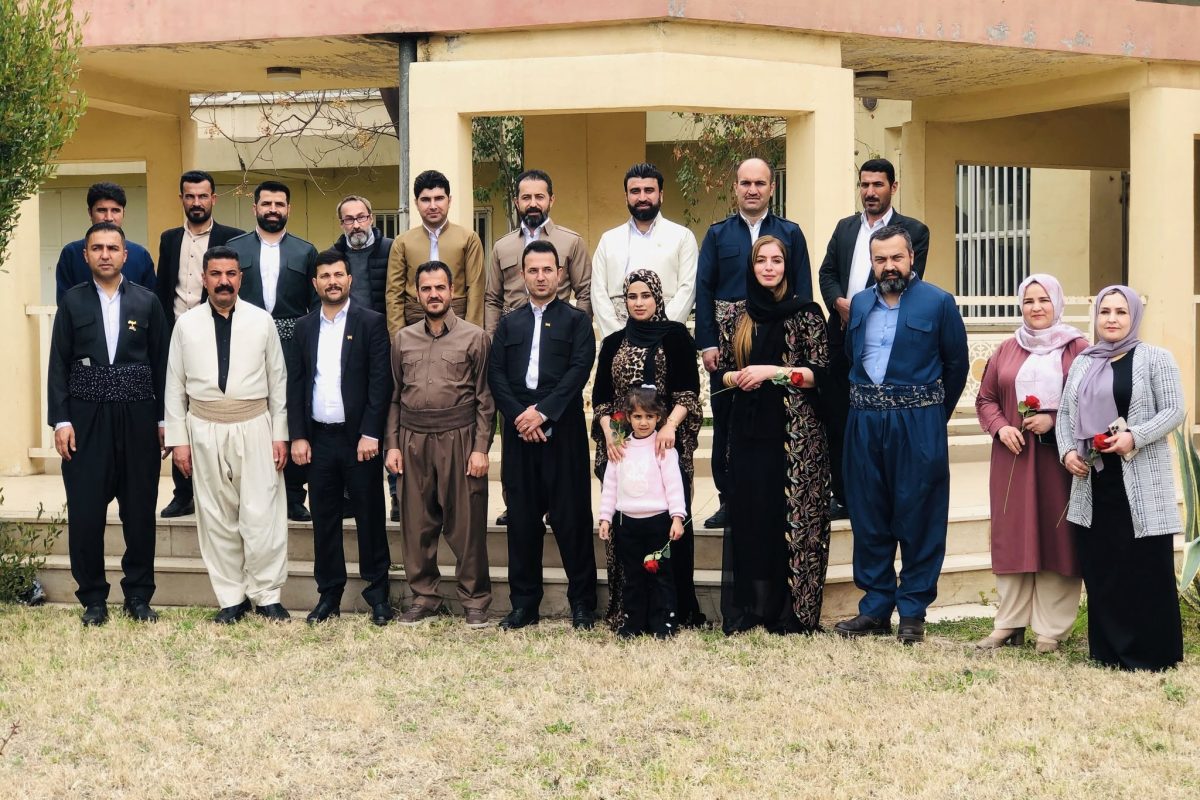On Sunday, March 9, 2025, under the supervision and presence of the Dean of Erbil Technical College of Engineering, Prof. Ayad Zaki Saber, accompanied by Assistant Dean Dr. Bazian Younis Mohiuddin, Administrative Director Hemn Ni’mat Hussein, Head of Boys Dormitory Dana Hussein Ahmad, in the presence of the staff of boys dormitories and general representative of college students Mr. Bayar Hemn Rashid, after prayer Evening and Tarawih visited the boys’ dormitory of Technical College of Engineering.
While congratulating the holy month of Ramadan, Mr. Dean of the College closely asked about the situation and needs of the students and expressed his readiness to implement any request they have in the plan.
It is worth mentioning that the students warmly and happily appreciated the arrival of the Dean and felt that they have practical knowledge of their internal department.
Mr. Dean of the College wished success and safety to the students and congratulated the officials and staff of the internal departments and student representatives.
On Tuesday, March 11, 2025, under the supervision and presence of the Dean of Erbil Technical College of Engineering, Prof. Ayad Zaki Saber, accompanied by Assistant Dean Dr. Bazian Younis Mohiuddin and Administrative Director Hemn Ni’mat Hussein, hosted the Head of Erbil Polytechnic University Teachers Organization Dr. Kovan Omar Hassan Barzani, the presence of the college council and several teachers of both departments of mechanics and energy and the general representative of the college students Mr. Bayar Hemn Rashid, celebrated the eleventh day of Ramadan with the students of the internal departments of both departments of mechanics and energy and roads in the club of Erbil Technical College of Engineering.
It is worth mentioning that this breakfast was to provide a peaceful atmosphere for foreign students to coordinate and strengthen the spirit of unity and religious occasions to celebrate and as a social and religious gathering to gather teachers, students and employees.
In the hope of safety and continuity of these religious and social events in the view of Mr. Dean was presented to remain as an orderly culture in the future and further developed.


A skills development course aimed at bridging educators worldwide has successfully concluded as part of a Memorandum of Understanding between Portville College in California and Mergasor Technical Institute/Erbil Polytechnic University.




The course, which ran from November 15, 2024, to March 10, 2025, brought together 70 university teachers—60 from Erbil Polytechnic University and 10 from Soran Autonomous Administration. Delivered online via Canvas and Zoom, the program featured five key modules covering skills development, effective classroom design, lesson planning, understanding students, and identifying barriers to quality education, while integrating global pedagogical insights.
A significant outcome of the course was the advancement of English language learning and translation into Kurdish. The initiative was delivered by Dr Queenan, professor at Porterville college- California and supported by Dr Talib Omar, Dean of Mergasor Technical Institute, who participated as an assistant.
The program was praised for its role in enhancing teaching standards and concluded successfully. Participants will soon be awarded international certificates at a formal ceremony.









